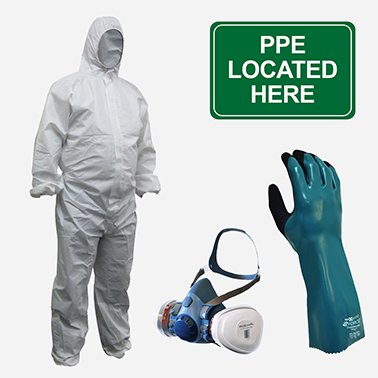Agsafe blog: Maximise PPE effectiveness with proper storage, training, and maintenance
Personal Protective Equipment (PPE) serves as the last line of defence against hazardous exposures in the workplace. When all other risk control measures have been exhausted, PPE becomes essential in safeguarding personnel. However, the effectiveness of PPE hinges not only on its availability but also on the proper knowledge of its storage and use. Ensuring that personnel are well-trained, and this training is documented is crucial for workplace safety.
Storage of PPE
PPE must be readily accessible in any workplace handling hazardous materials. This requires designated storage areas that are easily identifiable and reachable in case of emergencies. Everyday PPE, such as high-visibility clothing, work boots, gloves, and hats, is typically worn by workers during their shifts. However, specialised PPE for chemical emergencies, including respirators, overalls, goggles or face shields, gum boots, and elbow length chemical-resistant gloves, must be stored separately. This separation prevents confusion and ensures quick access during emergencies.
Training in PPE use
Merely having PPE available is not enough. Personnel must be trained in its correct use to ensure maximum protection. This training should cover the proper way to wear, adjust, and maintain each piece of equipment. For example, a respirator must fit snugly to prevent exposure to airborne chemicals, while gloves should be checked for punctures or tears before use. Training should also include scenarios where different types of PPE are required, such as routine work versus chemical spill emergencies.
Agsafe’s PPE AgByte aims to outline the purposes and examples of PPE, its integration into the Risk Management Process, responsibilities, requirements when handling AgVet Chemicals, protection of key routes of exposure, criteria for PPE selection, and the utilisation of PPE in emergencies. Additionally, it covers the use of SDS for identifying correct PPE.
Documenting training
Documenting PPE training is a critical aspect of workplace safety management. It provides a record that employees have received the necessary instruction and understand how to use PPE correctly. This documentation should include details such as the date of training, the topics covered, the names of the attendees, and the trainer's credentials. Regular refresher courses should also be documented to ensure ongoing compliance and address any new risks or changes in PPE protocols.
Challenges and solutions
One of the challenges with PPE is its potential ineffectiveness due to damage, wear, or poor fitting. Regular inspections and maintenance of PPE are essential to ensure it remains in good condition. Personnel should be trained to inspect their PPE before each use and report any issues immediately. Additionally, proper storage can prevent unnecessary wear and tear, ensuring PPE is always in optimal condition when needed.
Conclusion
In conclusion, while PPE is the last resort in hazard control, its proper use and storage are vital for ensuring personnel safety. Comprehensive training and meticulous documentation are essential components of an effective PPE program. By prioritising these elements, workplaces can enhance their safety protocols and ensure that their personnel are well-equipped to handle hazardous situations.

